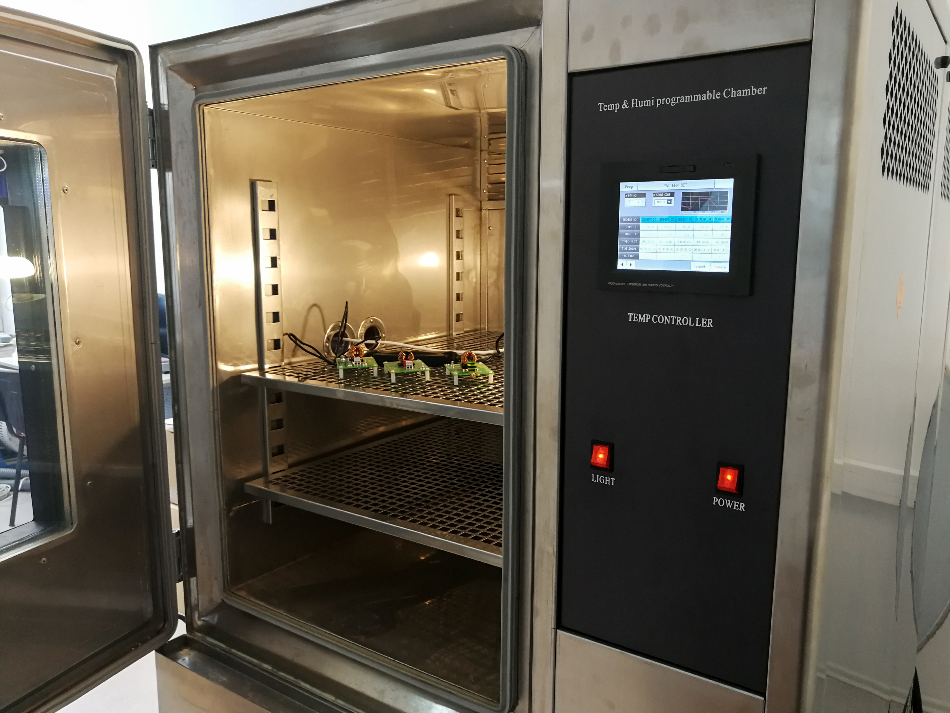Article updated on 11 March 2021
In materials science, thermal testing refers to the process of subjecting materials to analysis through thermal control in order to collect data on a wide range of properties.

Image Credit/Shutterstock:Audrius Merfeldas
Generally, thermal testing is carried out using increasing temperature, but isothermal testing and analysis using decreasing temperatures is also used for identical purposes. Thermal testing is a wide-reaching and versatile analysis technique and adding a thermal control to otherwise unrelated analysis processes constitutes thermal testing.
Below is an overview of four commonly used thermal testing techniques; thermogravimetric analysis, differential scanning calorimetry, thermomechanical analysis, and dynamic mechanical analysis.
What is Thermal Testing?
Thermal testing is a method of testing a materials ability to operate safely at different temperatures. Data gathered by thermal tests allow users of products to understand its safe operating limits, as well as gain more information about the material’s general characteristics and potential lifespan.
Thermal tests are used to measure a materials physical, mechanical, chemical, and thermodynamic changes. Exact temperatures and loads that cause changes in these properties can also be ascertained. Thermal testing sheds light on glass transition temperatures, crystalline melt temperatures, the flammability of materials, as well as their oxidative and thermal stability.
The molecular structure of crystalline and amorphous polymers and identifying new and unknown materials is also carried out using thermal testing. This can lead to improvements in existing materials by determining weaknesses and limitations.
What Are the Different Types of Thermal Analysis?
Thermogravimetric Analysis (TA)
Thermogravimetric analysis is one of the most common thermal testing techniques. It monitors changes in the mass of a sample as it is subjected to changing temperatures. Physical changes tested through TA include phase transitions, absorption, adsorption, and desorption. Chemical changes tested by TA include chemisorptions, thermal decomposition, and oxidation and reduction.
There are three types of thermogravimetric analysis:
Isothermal thermogravimetry
Measuring sample mass against time at constant temperatures.
Quasistatic thermogravimetry
Measuring constant sample mass at increasing temperatures.
Dynamic thermogravimetry
Measuring samples at predetermined, changing temperatures at linear rates.
To carry out thermogravimetric analysis, a thermogravimetric analyzer (equipment consisting of a sample pan, furnace, and temperature control) takes mass, time, and temperature as base measurements and subjects the sample to a range of different atmospheric conditions. These can include:
- Ambient air
- Vacuums
- Inert gases
- Oxidizing gases
- Reducing gases
- Corrosive gases
- Constant pressure
- High pressure.
Thermogravimetric analysis can be used to study thermoplastics, thermosets, elastomers, composites, plastic films, coatings, fuels, and paints.
Differential Scanning Calorimetry (DSC)
Differential scanning calorimetry is another common thermal testing technique. It involves applying different heat levels to samples, determining the quantity of heat required to increase the temperature of the sample.
To carry out differential scanning calorimetry, two measuring cells (one used for the sample and one used for the reference holder) are heated with individual heaters. Temperature is measured with individual sensors. When temperature differences begin to take place, a control loop adjusts the power input.
DSC is commonly used in:
- Glass-rubber transition temperature experiments
- Melting/recrystallization temperature and heat tests
- Reacting system measurements.
Thermomechanical Analysis (TMA)
Thermomechanical analysis measures the changes in a polymeric samples dimensions when subjected to varying temperatures, including thermal expansion.
TMA involves heating a sample on a quartz platform, with a rod applying light pressure to the sample. As the temperature of the sample increases, it expands, causing the rod to move, and dimensional changes are recorded. Chemical identification, material classification, and research and development are areas in which TMA has found application. Additionally, TMA can gather data on crystalline phases, melting points, and glass transition temperatures.
Dynamic Mechanical Analysis (DMA)
Dynamic mechanical analysis uses temperature, time, frequency, stress, and atmosphere in varying combinations to investigate a materials properties. DMA uses an oscillatory force at a set frequency to collect data on changes in sample stiffness and damping (dissipation of energy under cyclic load), as opposed to TMA, which uses a constant, static force to collect data on changes as time and temperature increase.
DMA is carried out by subjecting a sample to sinusoidal deformation through controlled stress via a force motor generating sinusoidal waves. The stiffness of a sample will directly relate to the level of deformities seen through analysis.
Summary
There are a wide range of different thermal analysis techniques used throughout this branch of materials science. The different analysis techniques are characterized by the different properties they measure, including physical changes occurring due to increasing temperatures or pressure, chemical changes brought on by differing atmospheric conditions, or thermodynamic and mechanical changes.
Although the term thermal testing implies analysis carried out using increasing temperatures, thermal testing can additionally be carried out using isothermal tests and decreasing temperatures. While there are specific thermal analysis techniques, any experiment using changes in temperature to gather data on sample changes can be considered thermal testing.
Thermal testing extends far beyond materials, being used in drugs testing and medical analysis. In materials science, however, thermal testing is used to identify new or unknown materials, test durability and flammability of materials, and determine safe operating limits for materials being used in a huge range of industries.
Sources
Disclaimer: The views expressed here are those of the author expressed in their private capacity and do not necessarily represent the views of AZoM.com Limited T/A AZoNetwork the owner and operator of this website. This disclaimer forms part of the Terms and conditions of use of this website.